Note: this stack was begun on 4/28/2022 and got sidelined by everything. I don’t feel that it is finished, but in light of the Tucker Carlson interview of Vladimir Putin, I’ve decided that now is as good a time as any to publish it.
A geolinguistic dig into Eurasia
Here in the United States, the situation on the southern border is a disaster. Literally. The mess seems as though it will get worse before it gets better.
While that is a topic for another day, I will state here that permanence is an illusion — what can be done by people can be undone by better people, eventually…doomers and fear porn be dammed.
A last-minute pre-pub preface: inasmuch as ‘border’ is a contentious topic these days, prior to the era of diplomacy the word was understood to mean a demilitarized zone of compromise between rival tribes. Usually these borders corresponded to geophysical features such as mountains and rivers.
Only much later did they become merely “The generals sat, and the lines on the map…moved from side to side” [Pink Floyd, Us And Them]. This is now known as balkanization, a derivative of the Sykes–Picot partition of the Middle East, where so-called ‘elites’ create artificial dividers which do not respect the cultural or linguistic preferences of the inhabitants. This is always due to corporate goals to plunder a region’s natural resources without sharing the profits with the locals.
All this recent talk about borders got me wondering about where Europe ends and where Asia begins. The globalist tug-of-war over ‘the Ukraine’ has the world divided over whether or not it belongs in the Eurosphere.
The Russosphere insists it does not, and that ‘the Ukrainians’ are their brethren, sorely in need of ‘liberation’ from ‘the West.’ Folks in southern and eastern Ukraine apparently agree, because they identify as Russian and always have — there are nearly 9 million ethnic Russians in ‘the Ukraine.’
I admit to being mostly ignorant about this part of the world until recently, and so Cheap Thoughts scribbled here may seem underinformed. I welcome all commentary and criticism — but don’t be a dick…I’m just a grump on a sofa, after all.
Figuring that ease of communication is often a prime indicator of peoples who are familial and/or of close geographic origin, I did an image search for ‘European language families map.’
The first image I found was this one. It’s very basic:
Because the focus of the search was to ascertain the boundary between Europe and Asia, the first thing that jumped out at me was a very clear demarcation:
Romance/Germanic (think [Holy] Roman Empire) v. Slavic language areas
Blue/red in the west v. green in the east
Scandinavia/Germania/Romana in the west and wait, wut?
What are those green countries on the eastern border of Germania? Gonna need another map with modern country names.
Searching further, I found this map with more detail:
The color scheme makes this one less boundary-obvious than the first map, but it sure does highlight how anomalous the red countries are within a sea of green. I had never heard of the Uralic Finnic/Ugric languages. More on them below.
We still have no modern country names, but I pretty much know most of them. The ones in question, on the German/Austrian eastern front, are (north to south) Poland, Czechia, Slovakia and Hungary (in red); and east of Italy, Slovenia: all (except Hungary) are Slavic-speaking nations.
As we all know, those five nations are current members of NATO, the original Pan-Europa defense treaty of 1949; and their combined territory was formerly part of the Warsaw Pact, the Marxist east’s response created in 1955.
So we see there is a clear division in Europe, and it seems to be on Germany’s eastern border, where the local language transitions from Romance/Germanic to Slavic.
That particular area has endured lots of strife over several centuries, and now I’m beginning to understand why. Clearly, language and culture are a factor.
I tweaked my search a bit and hit the motherlode. Zoom-in and spend a minute with this one…it’s packed with info:
So now I’m thinking, if language is a determining factor dividing Europe and Asia; and, if Slavic languages and the peoples who speak them are Asian; then not only is ‘the Ukraine’ not in Europe, but neither are Poland, Czechia, Slovakia or Slovenia — and certainly not Belarus. And certainly not Russia.
Apparently the Balkan Peninsula is a separate case entirely, with an almost bizarre diversity of language dispersion. Perhaps later I’ll address that region, but for now I’ll focus on the area north of the Hungary/Romania borders (what’s up with their languages surrounded by a sea of green?)
Going back in time a bit, I then found this map of the proto-languages of Eurasia, dating to about 700 years before the founding of the Roman Republic in 500 BC:
My first observation is that the Germanic and Slavic areas at that time were each much smaller than I would have expected them to be. In addition, the areas which later spoke Slavic were dominated by Finno-Ugric and Indo-Iranian speakers back-in-the-day; and to my mind, those languages are definitely Asian.
This suggests an explosion of Slavic language and culture to the north and east, displacing the pre-existing Asian (Finno-Ugric and Indo-Iranian) cultures. Those early Slavs must have been badasses!
On a side note, at that time much of Europe spoke some variety of Celtic.
Note also that the Slavic language area in 1200 BC roughly corresponds to today’s western Ukraine and Belarus.
Digging further, I found this image. The time period of this one is not indicated, but anyway it’s probably just meant to be indicative of where, and not when. I was already familiar with the German word urheimat — basically a language’s ‘homeland,’ or as close as historians can reckon it. Apparently the colorless areas are those where they don’t even have a guess yet:
The main area of note on this map is the big orange blob north of the Black and Caspian Seas — the urheimat of the Proto-Indo-European language group, which is the parent of:
all the European languages, AND
all the Slavic languages
Note that apparently, those first Indo-European speakers lived in an area now within today’s Russia and eastern Ukraine; and that they controlled almost all trade on the north shores of the Black and Caspian Seas.
The second area of interest on this map is the big purple blob north of the big orange blob: the Proto-Uralic group. This is the parent of Finnish, Estonian and several northern Russian/Siberian languages (and also Hungarian, which explains the what of that red country amidst the sea of green in the maps above — but not the how.)
The name ‘Proto-Uralic’ refers to the Ural Mountains in Russia, which stretch from the Caspian Sea north to the Arctic Ocean, and which have often been cited as the boundary between Europe and Asia.
From what we’ve seen so far, that boundary seems way too far east, since the Proto-Uralic linguistic area is entirely west of the Urals. I suggest that the Urals were designated the Europe / Asia divider simply for geophysical convenience, and that this idea is obsolete. In fact, the very existence of the Ural Mountains did not spread to European cartographers until the mid-1500s, after Muscovy expanded eastward to conquer the north Asian cultures living there. If Russians are Slavic / Asian, mountains to their east cannot be the boundary between Europe and Asia; it must be to Russia’s west.
After studying those maps, I decided to do some further linguistic research, and found this image:
Sure enough, the tree indicates that the speakers of Romance, Germanic and Slavic languages diverged from each other very early. That means that the Russian and Ukrainian languages (and of course Belarusian, Polish et. al.) are pretty much the same, when compared to Germanic or Latinate languages.
Here’s another good one:
The main use of the word ‘hundred’ between neighboring peoples back then was in trade. Note the remarkable consistency between the various branches of Slavic.
When your neighbors to the east use the same words in trade that you use, but your neighbors to the west do not, which direction will you likely face?
Quick recap:
The Russian and Ukrainian languages are mostly the same
Ease of communication facilitates trade, which facilitates familiarity, which facilitates cooperation
Socio-economics is an underappreciated aspect of historical cultural interaction
Language difference is a natural barrier to interaction
Slavic and European language speakers do not have mutual intelligibility (speakers of different but related dialects can readily understand each other without prior familiarity or special effort)
This alone suggests that ‘the Ukraine’ is more Slavic/Asian than it is European
Stay tuned for Part 2…


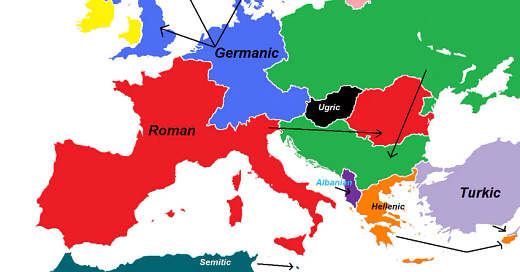



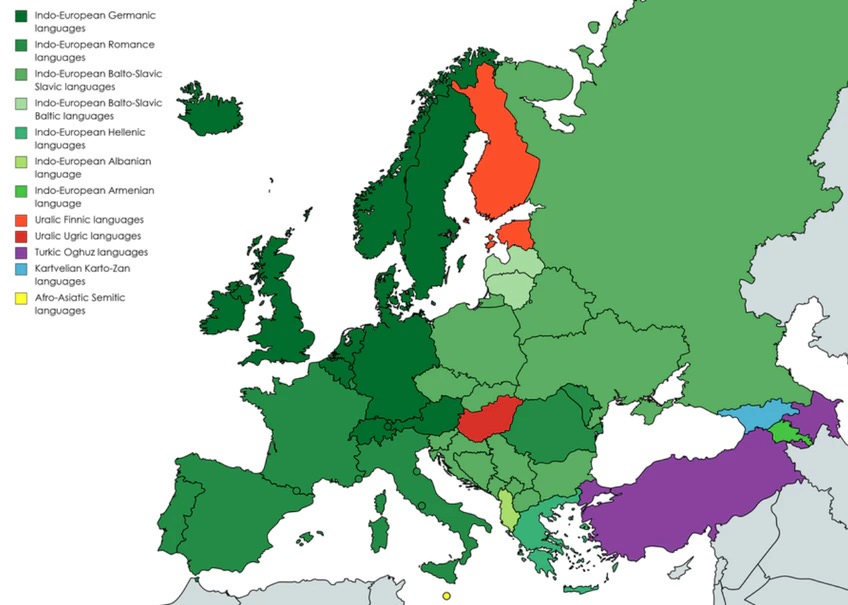
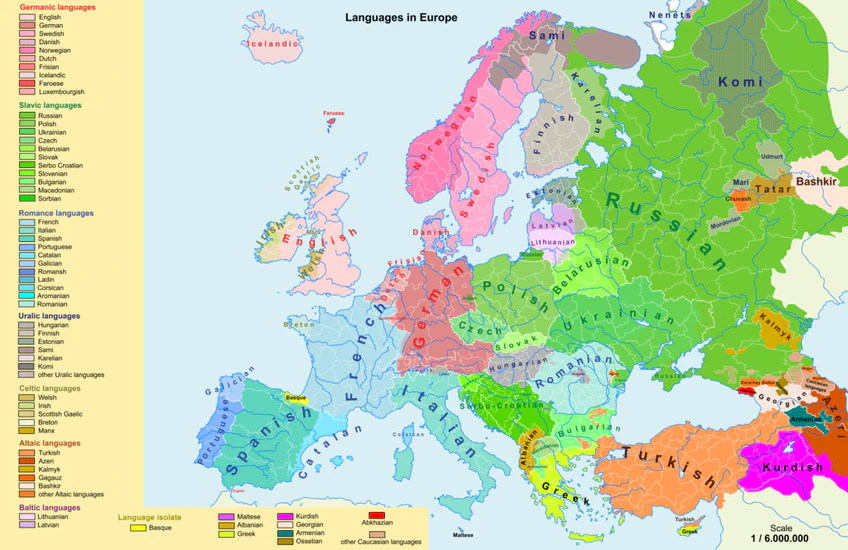
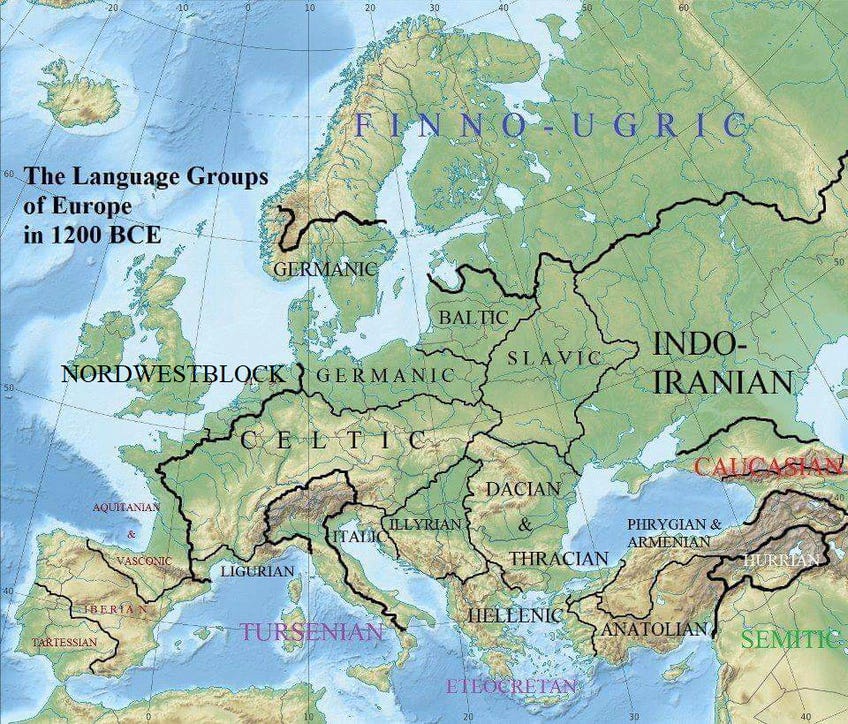

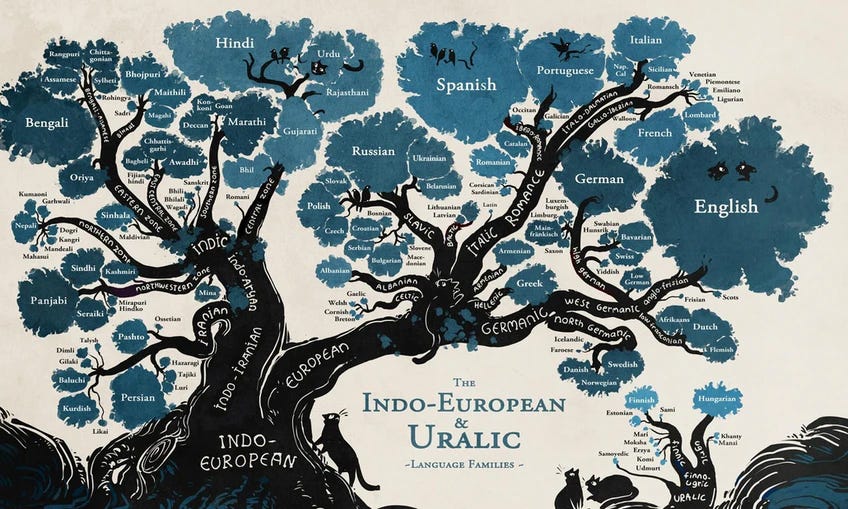
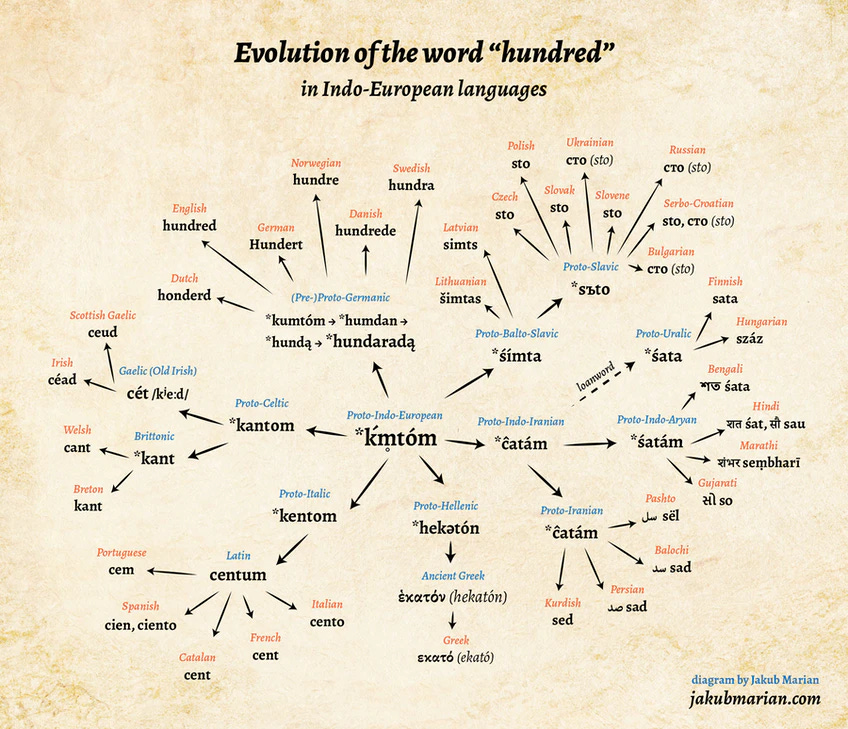
I'm convinced that if the overall culture shares a common moral system with humility as a central theme, it is a tight bond, overcoming language, customs & food. I define humility as a measure of if we value a Creator/Creation and treat one another with kindness and respect (New Testament Love). If one doesn't value a Creator, humans will not value the Creator's creation (earth, sky, space, humans, plants, water, etc).
Love, love the maps and looking forward to future parts.
Can’t wait for part 2!